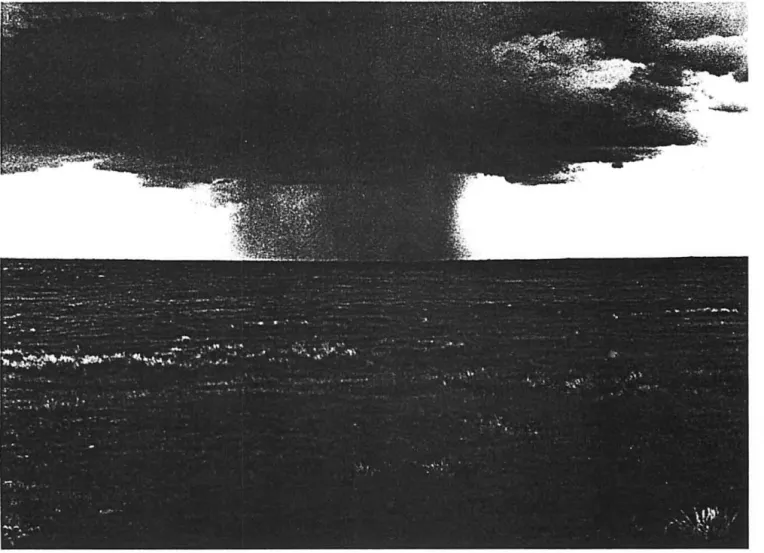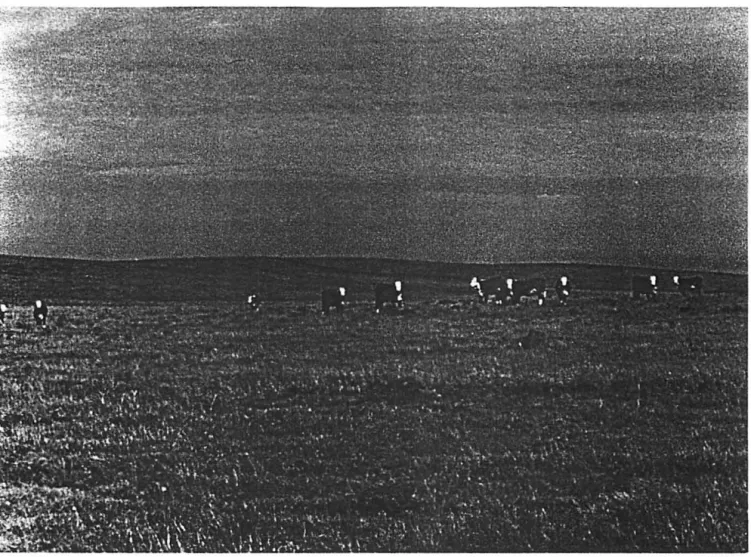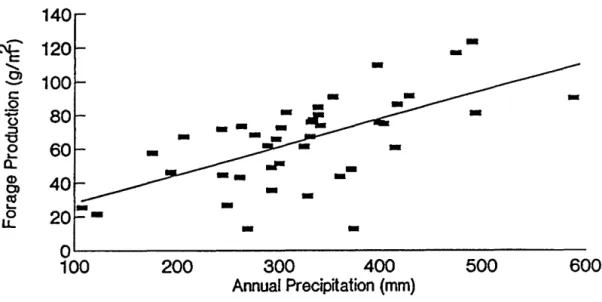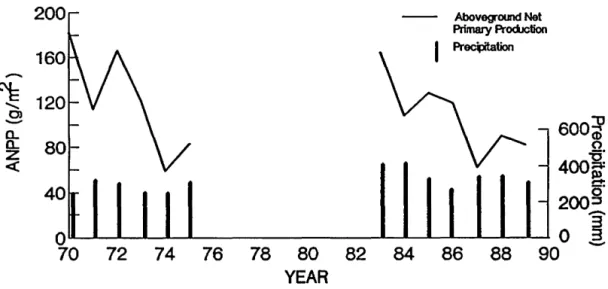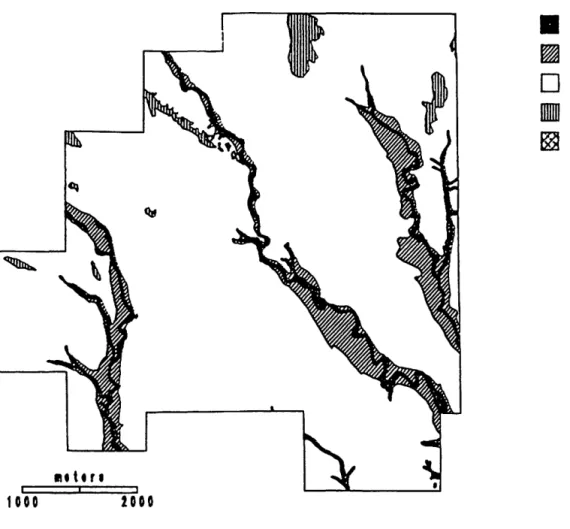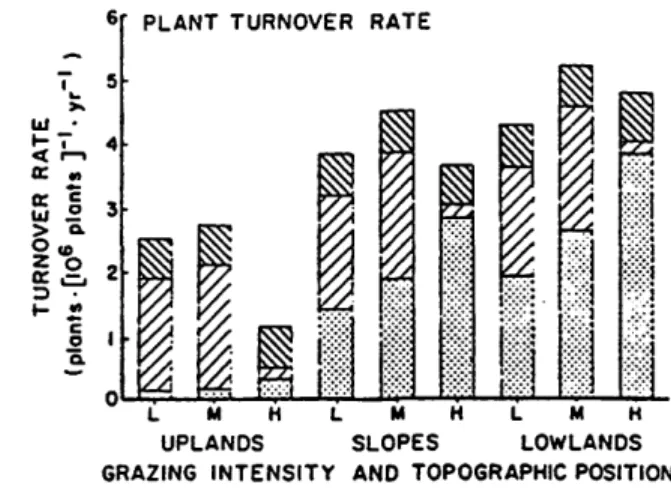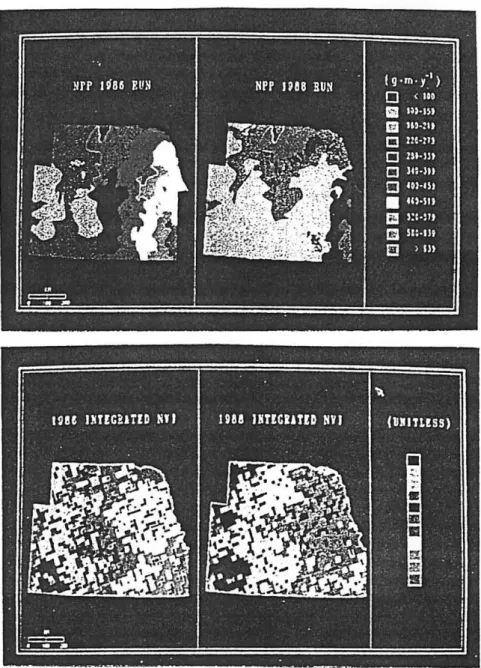OMB Num,,". 345-0058
NATIONAL SCIENCE FOUNDATION 1800 G STREET, NW
WASHINGTON, DC 20550
PIIPO Name and Address
Wil liam K. Lauenr oth
..
,.
,
~Natural Resource Ecol ogy l aboratory
Colorado state Univers it y
BULK RATE POSTAGE & FEES PAID National ScIence Foundation
PennI! No. G-69
Fort Col lins CO B0523
~A
1r
IONAl
SCIENCE FOUNDA
li
lON
FINAL PRO\JEC
,l'
AEP-OAT
..
PART I - PROJECT IDENTIFICATION INFORMATION
1. Program Official/Org. James • Callahan - ~Sl{
2. Program Name CO YSIEMS -"TUDIcS f-ROGRM
3. Award Dates (MM/YY) From: 01/87 To: 06/ 'i 1
4. Institution and Address
Colorado St ate University
Cffiee Of The Pr es ident
rur t Collins CO 80523
5. Award Number b6121- 5
6. Project Title
Lon" l erm ;:cologieal Resea r eb Program: Shor tgrass steppe
-This Packet Contains
NSF Form 98A Ip
PART IV - FINAL PROJECT REPORT - SUMMARY DATA ON PROJECT PERSONNEL (To be submitted to cognizant Program Officer upon completion of project)
The data requested below are important for the development of a statistical profile on the personnel supported by Federal grants. The information on this part is solicited in response to Public Law 99-383 and 42 USC 1885C. All informa-tion provided will be treated as confidential and will be safeguarded in accordance with the provisions of the Privacy Act of 1974. You should submit a single copy of this part with each final project report. However, submission of the requested information is not mandatory and is not a precondition of future award(s). Check the "Decline to Provide Information" box below if you do not wish to provide the information.
Please enter the numbers of individuals supported under this grant.
Do not enter information for individuals working less than 40 hours in any calendar year.
Senior Post- Graduate Under- Other
Staff Doctorals Students Graduates Particip~nts 1
Male Fem. Male Fem. Male Fem. Male Fem. Male Fem.
A. Total, U.S. Citizens
( l
\
\
2
\c.
,
1
g
B. Total, Permanent Residents
U.S. Citizens or Permanent Resldents2:
American Indian or Alaskan Native ... Asian ... Black, Not of Hispanic Origin ... Hispanic ... Pacific Islander ... White, Not of Hispanic Origin ...
C. Total, Other Non·U.S. Citizens
Specify Country
1. ~r~,,~~
\
2.
V
e.,£\.J~
"> ...~"
... (3.
D. Total, All participants
\1-
~
2 L
\l)
(]
S
(A+ B + C)
Disabled3
0 along with Parts I-III). Decline to Provide Information: Check box if you do not wish to provide this information (you are still required to return this page
1Category includes, for example, college and precollege teachers, conference and workshop participants.
2Use the category that best describes the ethniclracial status for all U.S. Citizens and Non-citizens with Permanent Residency. (If more
than one category applies, use the one category that most closely reflects the person's recognition in the community.)
3A person having a physical or mental impairment that substantially limits one or more major life activities; who has a record of such impairment; or who is regarded as having such impairment. (Disabled individuals also should be counted under the appropriate
ethnlc/racial group unless they are classified as "Other Non-U.S. Citizens. ")
AMERICAN INDIAN OR ALASKAN NATIVE: A person having origins in any of the original peoples of North America, and who main-tain cultural identification through tribal affiliation or community recognition.
ASIAN: A person having origins in any of the original peoples of East Asia, Southeast Asia and the Indian subcontinent. This area includes, for example, China, India, Indonesia, Japan, Korea and Vietnam.
BLACK, NOT OF HISPANIC ORIGIN: A person having origins in any of the black racial groups of Africa.
HISPANIC: A person of Mexican, Puerto Rican, Cuban, Central or South American or other Spanish culture or origin, regardless of race. PACIFIC ISLANDER: A person having origins in any of the original peoples of Hawaii; the U.S. Pacific Territories of Guam, American Samoa, or the Northern Marianas; the U.S. Trust Territory of Palau; the Islands of Micronesia or Melanesia; or the Philippines.
WHITE, NOT OF HISPANIC ORIGIN: A person having origins in any of the original peoples of Europe .. North Africa, or the Middle East.
PART II. SUMMARY OF COMPLETED PROJECT
The Central Plains Experimental Range (CPER) Long Term Ecological Research (LTER) project focused on spatial and temporal patterns of ecosystem
structure and function at the CPER in northcentral Colorado. Research was
concentrated in 5 areas: soil water; primary production; population dynamics; organic matter accumulation and nutrient dynamics; and disturbances. We produced exciting results in each of these 5 areas and significantly changed the state of knowledge about the origin and sustainability of shortgrass steppe ecosystems.
We now know that shortgrass landscapes at the CPER do not conform to the classical catena model. Alternating fluvial and eolian activity resulted in a complex pattern of topography and parent material. The semiarid climate with
a precipitation regime dominated by small precipitation events, results in
patterns water availability clearly concentrated in the upper layers of the soil. Interannual variability in aboveground primary production at the CPER is closely related to water availability. Using new methods we were able to
reliably estimate belowground primary production. Contrary to previous
concepts, our results indicate belowground production is approximately the
same magnitude as aboveground production. Bouteloua gracilis is the key
population in shortgrass ecosystems and patterns of recovery following
disturbances are major determinants of ecosystem structure and function. In
addition to the status of populations of Bouteloua gracilis, soil organic matter is
an important indicator of the sustainability of shortgrass ecosystems.
PART III. TECHNICAL INFORMATION
The Central Plains Experimental Range Long Term Ecological Research project (CPERILTER) began in 1982. This report specifically addresses work
during the period January 1, 1987 to December 31, 1990 under project
BSR-8612105. Throughout the 8 years our research has focused on the spatial and temporal patterns of long-term processes within the context of the 5 LTER core
topic areas. This report will provide an overview of that research by
highlighting specific results. A complete list of publications can be found in
Appendix 1.
The Central Plains Experimental Range (CPER) is a 6500-ha research site administered by the USDA/Agricultural Research Service (ARS) (Fig. 1).
The site was established in 1939 and has been in operation continuously since
that time. The site was also the location of an enormous amount of field research during the US International Biological Program (IBP) in the late 1960s and early 1970s. The historical and ongoing work by ARS scientists as well as the experience and database built during the IBP project has been a tremendous resource for the CPERJLTER project.
The Five Core Areas
Since LTER I, we have used a slightly modified set of 15 core areas to focus our effort at the CPER. Linkage of nutrient dynamics with soil organic matter (SOM) is so close in grasslands that our approach has treated core topics 3 and 4 as a single issue. In addition, we have added a new core area, Water Dynamics a research area that we consider to be fundamental for
1
Figure lao A typical summer thunderstorm at the Central Plains Experimental Range.
A large fraction of the growing season rainfall is received as convective
storms.
Fig. lb. A typical moderately grazed pasture at the Central Plains Experimental Range.
understanding the structure and function of the shortgrass steppe. Below, we describe several of the key results of our research in each of these core areas.
Water dynamics
Because ecosystems in semiarid regions are largely controlled by water,
understanding the temporal variability in precipitation inputs is critical to
interpreting the significance of ecosystem responses. The LTER project began during a 6-year period in which annual precipitation was above the long-term.
mean for the site (Fig. 2). This 6-year period was preceded by a 9-year dry
period in which 7 of the years had annual precipitation below the mean. Mean annual precipitation for the 8 years of the LTER project was 354 rom, 9%
above the long-term mean of 324 rom. The first 3 of the LTER years were above the long-term mean and the last 5 have been below the mean. It is clear from the 47-year record of annual precipitation that the 8 years of the LTER project represent only a fraction of the observed variability in water
inputs. It is also clear that it will be difficult to say when we have observed a
representative sample of the range of variability. Pattern and control of primary production
Net primary production (NPP) in shortgrass steppe ecosystems is an
important and sensitive system response to interannual and annual variation in
water availability. The relationship between aboveground net primary production (ANPP) and annual precipitation has often been reported to be linear over the range of precipitation received at the CPER (Fig. 3). Part of our LTER effort on primary production involves annual estimation of ANPP at a variety of sites including a grazing exclosure that was also sampled during
~ 3oor--===~~C~PER~~~~a=n~---~~---'
~ L TER Mean L TER Project Began
:g
200 ~ 100r-~---~---~~~---~~~~----~ c _~ ~ Or-~--Tr~~~~~~~~M~~·+-~~~~~--~-4~
~-
Eg
-1oor-~~~:~--~~--41--44----~~~~~---~~ c 0 -200 :p m .:;: (J) -300 c 40 45 50 55 60 65 70 75 80 85 90 YearFigure .2 Long-term deviations of annual precipitation from the 47-year CPER mean (324 mm) and the 8-year L TER mean (348 mm).
140
-
120-"E
-... 0>-
c 0 ;:; 0 ~ -0 0 L-a.. (J) 40 Ol as L-0 IJ..-
-0 100 200 300 400 500 600 Annual Precipitation (mm)Figure 3 Relationship between annual precipitation and annual aboveground forage production for 43 years at the CPER.
the IBP project from 1970-1975 (Fig. 4). Although the relationship between ANPP and annual precipitation is well established, it does not always provide a clear and simple explanation for the observed variability in the data. This is clearly shown by the spread of the data around the regression of ANPP on
precipitation (Fig. 3) and the apparent contradictions in the exclosure data (Fig.
4) in which ANPP is high during several dry years and low in two of the wet
years. The explanation is likely related to both the effects of time lags and other variables such as nitrogen availability.
Spatial and temporal distribution of populations chosen to represent trophic structure
The trophic structure of shortgrass ecosystems is dominated aboveground by grasses, cattle, and macroarthropods such as grasshoppers, and belowground by grasses, nematodes, fungi, bacteria, and protozoans. Ecosystems at the CPER have an asymmetric trophic structure typical of semiarid regions, where greater species and functional group diversity is found belowground than aboveground. In assessing spatial and temporal distributions of important populations, we face tradeoffs between ecological importance and feasibility. Our work to date has focused on 2 groups of populations, plants and
herbivores. As an example, population dynamics of 3 important perennial plant species clearly indicate the year-to-year variability characteristic of the
shortgrass steppe (Fig. 5). These results also illustrate that plant populations do not necessarily respond similarly to the same environmental signal.
"E
... OJ-
0... a..z
«
200 40 Aboveground Net Primary ProdJction PrGC~tion 600~ o 400"&a
2oo§f
-
3 0" • • • • • • • • • • • I 0 .2-70 72 74 76 78 80 82 84 86 88 90 YEARFigure 4 Aboveground net primary production and annual precipitation in an exclosure on an upland location on a sandy clay loam soil. This site was sampled for 6 years during the IBP project and has been sampled for 7 years during LTER.
8 >. 7 ~ en
~'i6
.~ 'U; 5= '-
o <1> ~ :t=i 4 0 - 0 tU ~3 :J en .Q :J ~ ~2cB
e 1 - Bouteloua gracilis Opuntia poIyacantha ... Sphaeralcea coccinea---.
;::::1
...
...
..
...
-. ...-o \
I I I I I I I ' 71 72 73 74 75 76 77 YEAR , ,...
~ -60 0"8
500 '< CD ~ :J 0 40~ ~ '< -_ i
30~g
2Oi~
... ~8 10 g s· CD I I I I I I I 0 ~ 82 83 84 85 86 87Figure 5 Density of tillers of ft. gracilis, clad odes of O. oolyacantha, and individuals of S. coccinea
in an exclosure on an upland location on a sandy clay loam soil. Density was sampled during IBP, between IBP and LTER and during LTER.
Pattern and control of organic matter accumulation and of inorganic inputs and movements of nutrients
SOM is the single best indicator of ecosystem status at the CPER and in semiarid regions in general. Our work on these topics has included the important long-term effects of geomorphic and pedologic processes. During LTER I, we concluded that even though the CPER landscape has been shaped by fluvial processes, the presence of deflation basins, relic dunes, and paleosols developed in loess, combined with the lack of low order stream channels,
suggests that eolian processes played a dominant role in shaping the modem landscape. Work under LTER II funding has resulted in a detailed map of
surficial geology (Fig. 6), a field installation for long-term observation of eolian
sediment transport, and a detailed investigation of 137C as an index of
mid-term (20 years) soil redistribution patterns.
Patterns and frequency of disturbance to the site
Disturbance research associated with the CPERILTER project began with a broad definition of disturbance and included long-term grazing and additions of nitrogen and water. During LTER II we began to sharpen our focus and our
definition of disturbance. The overwhelming importance of Bouteloua gracilis in
shortgrass ecosystems lead us to initiate a line of small spatial scale
disturbance research that focused on individual plants and the consequences of
events that resulted in their death (Fig. 7). Finally our interests in the regional
significance of our research caused us to begin to evaluate large spatial scale processes including the mosaic of landuse in the region surrounding the CPER (Fig. 8).
II
Ot AllIYIGI ~ 02 ALLUYIUM0
Ol ALLUYIUM 0lIIIJ 04 ALLUYIUM ~ LAlAlllE fORMATIOI litter. i i i 1000 2000Figure 6 Surficial geology map produced as a result of research during LTER (Davidson 1988). Ql alluvium is the youngest deposit (c. 15000 BP) and forms terraces 0.3 to I m above modern streams. Q2 is a valley fill deposit (c. 5000-8000 BP) that covers approximately 15% of the CPER. Q3 is the most extensive Quaternary deposit covering approximately 80% of the site. It was deposited approximately 90,000 BP. Q4 alluvium is the oldest deposit at the CPER (160,000 BP) (Davidson
1988).
22~ PLANT COvER TURNOVER RATE
- 20
.~ 18
C\I
.~ 16 ~ ANIMAL BURROWS
C\I 14~ fZ2 ANT MOUNDS
e 12t
rn
FECAL PATS UJ ~ 10 c( er 8 f5 E > o 4 Z er :;) ~ ..•.... ."0]i
Iii.!!: L M H L M H L M HUPLANDS SLOPES LOWLANDS
GRAZING INTENSITY AND TOPOGRAPHIC POSITION
I .. >-UJ· ~
..
c(.-, er ., er C w2 > a. oeD Z 0 ere, :;) ~ ~ c:: o Q.PLANT TURNOVER RATE
UPLANDS
GRAZING INTENSITY AND TOPOGRAPHIC POSITION
Figure 7 Average contribution to turnover rates of basal cover and number of
R.
gracilis plants byeach disturbance type for 9 locations, by grazing intensity and topographic position. (Grazing intensity: L=light, M=moderate, H=heavy) (Coffin and Lauenroth 1988).
Lauenroth, W.K. 8612105
•
WATER
i>;,/////.
~#j
RANGELAND
~~
•
RIPARIAN VEGETATION
II
CROPLAND
•
BARREN LAND
FALLOW- CROPLAND
Fig 8. Classification of thematic mapper data for the area surrounding CPER
(Outlined). The classification separated the major categories of landuse
Synthesis and intersite activities
The past three years have been particularly important for synthesis and intersite efforts for CPERILTER scientists. A number of these are completed products; others are in progress. Perhaps one of our most successful areas of synthesis is in the development and application of simulation models with
relevance to all core topic areas. The CENTURY ecosystem model is one of our major contributions in this area (Fig. 9). The conceptual framework for SOM and nitrogen (N) represented in CENTURY has gained significant support in the ecological community, and is being adopted as a general construct across many ecosystems.
With funding from the LTER supplemental program, we began a new
synthetic, intersite effort that involves application of the CENTURY ecosystem
model to a spatial database for a box transect from the CPER to the Konza
LTER site. We are using Advanced Very High Resolution Radiometer (AVHRR) data as an independent model to corroborate regional simulations using the CENTURY model (Fig. 10).
Data management
During the 8 years of the CPERILTER project, we have developed a data management program for accurate entry, storage, security, and easy access of long-term data. In addition, we are developing a spatial database management system using a geographic information system (GIS). The GIS will be used for storing the location of past and current experiments, for maps of natural and artificial features of the site, and for aiding in site planning and research.
PLANT RESDLE STRUCTLRAl. C (3 y) t.£TABOUC C (0.5 y) ~~OWSOL (25 y) PASSIVE SOl. ~C (1000 y)
Figure 9 Box and arrow diagram for the carbon (SOM) submodel of the CENTURY ecosystem
model.(Parton et al. 1988). Numbers in boxes ar~ turnover times.
Figure 10. Top two panels: Simulated aboveground net primary production (NPP) in the central Great Plains for 1986 and 1988. The CENTURY ecosystem model was driven by a geographic information system (GIS) containing information on soil texture, precipitation, and temperature.
Lower two panels: Integrated Normalized Difference Vegetation Index (NDVI) from the Advanced Very High Resolution Radiometer (AVHRR) for 1986 and 1988. NDVI provides an independent model of aboveground production. The correlation between CENTURY and NDVI was significant for both years (p < 0.001).
APPENDIX 1
Publications 1982-1989
Our approach to compiling a list of publications, theses, and dissertations for the CPER/LTER project was to take the broadest possible approach to the definition of "an LTER
publication." The CPER/LTER project is so well integrated into other research activities in the Range Science Department and the Natural Resource Ecology Laboratory that it is impossible to
unambiguously define "an LTER publication." Our intentions are not to try to inflate the apparent productivity of the project, but to illustrate the legitimate scope of our research at the central Plains Experimental Range.
Bachelet, D., H.W. Hunt and J.K. Detling. 1989. A simulation
model of intraseasonal carbon and nitrogen dynamics of blue grama swards as influenced by above- and belowground
grazing. Ecol. Modelling 44:231-252.
Burke, I.C., C.M. Yonker, W.J. Parton, C.V. Cole, K. Flach and
D.S. Schimel. 1989. Texture, climate, and cUltivation
effects on soil organic matter context in
u.s.
grasslandsoils. Soil Sci. Am. J. 53(3)800-805.
Burke, I.C., D.S. Schimel, C.M. Yonker, W.J. Parton, L.A. Joyce,
and W.K. Lauenroth. 1989. Regional modeling of grassland
biogeochemistry using GIS. Landscape Ecology (in press).
Coffin, D.P. 1988. Gap-phase dynamics and succession in the
shortgrass steppe. Ph.D. Dissertation. Colorado State
Univ., Ft. Collins, CO. (Advisor: W.K. Lauenroth)
Coffin, D.P. and W.K. Lauenroth. 1988. The effects of
disturbance size and frequency on a shortgrass plant community. Ecology 69:1609-1617.
Coffin, D.P. and W.K. Lauenroth. 1990. A gap dynamics simulation model of succession in the shortgrass steppe. Ecological Modelling (49:229-266).
coffin, D.P. and W.K. Lauenroth. 1989. Disturbances and gap dynamics in a semiarid grassland: A landscape- level
approach. Landscape Ecology 3:19-27.
Coffin, D.P. and W.K. Lauenroth. 1989. Small scale disturbances and successional dynamics in a shortgrass community:
Interactions of disturbance characteristics. Phytologia
67(3):258-286.
Coffin, D.P. and W.K. Lauenroth. 1989. The spatial and temporal variability in the seed bank of a semiarid grassland.
American Journal of Botany 76(1): 53-58.
Coffin, D.P. and W.K. Lauenroth. 1990. Effects of western harvester ants (Pogonomyrex occidental is Cresson) on a semiarid grassland and the successional dynamics of nest sites. American Midland Nauralist (in press).
Cole, C.V., J.W.B. Stewart, H.W. Hunt and W.J. Parton. 1986.
Cycling of C, N, Sand P: controls and interactions. Proc.
XIII Congress International Soc. Soil Sci. VI:636-643.
Cole, C.V., I.C. Burke, W.J. Parton, D.S. Schimel and D.S. Ojima.
1988. Analysis of historical changes in soil fertility and
organic matter levels of the North American Great Plains. In: P.W. Unger, T.V. Sneed and R.W. Jensen (eds.), Proc. International Conference on Dryland Farming, Amarillo, TX.
15-19 Aug. 1988. Texas A & M University, College station,
TX.
Cole, C.V., D.S. Ojima, W.J. Parton, J.W.B. Stewart and D.S.
Schimel. 1989. Modeling land use effect on soil organic
matter dynamics in the central grassland region of the U.S. pp. 89-99 In: M. Clarholm and L. Bergstrom (eds.), Ecology
of Arable Land. Kluwer Academic Publishers.
Davidson, J.M. 1989. Surficial geology and quaternary history
of the Central Plains Experimental Range, Colorado. M.S.
Thesis. Colorado state Univ., Fort Collins. (Advisor: D.O.
Doehring)
Hanson, J. B., J. W. Skiles, and W. J. Parton. 1989. SPUR:
Simulating plant growth on rangelands. Ecological Modelling (in press).
Hanson, J.D., J.W. Skiles and W.J. Parton. 1988. A multispecies
model for rangeland plant communities. Ecol. Modelling 44:89-123.
Hunt, H.W., E.R. Ingham, D.C. Coleman, E.T. Elliott and C.P.P. Reid. 1988. Nitrogen limitation of production and
decomposition in prairie, mountain meadow, and pine forest. Ecology 69:1009-1016.
Ingham, E.R., D.C. Coleman and J.C. Moore. 1989. An analysis of food-web structure and function in a shortgrass prairie, a mountain meadow, and a lodgepole pine forest. BioI. Fertil. Soils 8:29-37.
Kirchner, T.B. 1989. TIME-ZERO: The Integrated Modeling Environment. Ecological Modeling 47:33-52.
Liang, Y., D.L. Hazlett and W.K. Lauenroth. 1989. Water use efficiency of five plant communities in the shortgrass steppe. Oecologia (Berl.) 80:148-153.
Logan, J.A. 1988. Toward an expert system for development of pest simulation models. Environ. Entomol. 17(2):359-376. McGinnies, W.J. and W.A. Laycock. 1988. The Great American
Desert--Perceptions of pioneers, the Dust Bowl and the new sodbusters. In E.E. Whitehead, C.F. Hutchinson, B.N.
Timmermann and R.G. Varady (Eds.). Arid Lands Today and Tomorrow, Proc Intern. Research and Development Conference, Tucson AZ, Oct. 20-25, 1985. westview Press, Boulder, CO. pp. 1247-1254.
McGinnies, W.J., W.A. Laycock, T. Tsuchiya, C.M. Yonker and D.A. Edmunds. 1988. Variability within a native stand of blue grama. J. Range Manage. 41:391- 394.
Milchunas, D.G. and .W.K. Lauenroth 1989. Three-dimensional distribution of vegetation in relation to grazing and topography in the shortgrass steppe. oikos 55:82-86.
Milchunas, D.G. and W.K. Lauenroth. 1989. Effects of grazing, topography, and precipitation n the structures of a semiarid grassland. Vegetatio 80:11- 23.
Milchunas, D.G., O.E. Sal a and W.K. Lauenroth. 1988. A generalized model of the effects of grazing by large herbivores on grassland community structure. Am. Nat. 132:87-106.
Milchunas, D.G., W.J. Parton, D.S. Bigelow and D.S. Schimel. 1988. Factors influencing ammonia volatilization from urea in soils of the shortgrass steppe. J Atmos. Chem. 6:323-340.
Parton, W. J., C. V. Cole, J. W. B. stewart, and D. S. Schimel.
1989. Regional modeling of C, Nand P in temperate
grassland soils. Plant and Soil (in press).
Parton, W.J., A.R. Mosier and D.S. Schimel. 1988. Rates and
pathways of nitrous oxide production in a shortgrass steppe. Biogeochemistry 6:45-58.
Parton, W.J., C.V. Cole, J.W.B. Stewart, D.S. Ojima and D.S.
Schimel. 1989. Simulating regional patterns of soil C, N,
and P dynamics in the u.S. central grassland region.
pp.
99-108 In Ecology of Arable Land. M. Clarholm and L.
Bergstrom (eds.). Kluwer Academic Publishers.
Parton, W.J., J.W.B. Stewart and C.V. Cole. 1988. Dynamics of C,
N, P and S in grassland soils: a model. Biogeochemistry 5:109-131.
Sala, O.E. 1988. The effect of herbivory on vegetation
structure. pp. 317-330 In: M.J.A. Werger, P.J.M. van der
Aart, H.J. During and J.T.A. Verhoeven (eds.), Plant Form and Vegetation Structure: Adaptation, Plasticity, and Relation to Herbivory. SPB Academic Publishing bv, The Hague, The Netherlands
Sala, O.E., M.E. Biondini and W.K. Lauenroth. 1988. Bias in
estimates of primary production: an analytical solution. Ecol. Modelling 44:43-55.
Sala, O.E., W.J. Parton, L.A. Joyce and W.K. Lauenroth. 1988.
Primary production of the central grassland region of the united States: Spatial pattern and major controls. Ecology 69:40-45.
Schimel, D.S., S. Simkins, T. Rosswall, A.R. Mosier and W.J.
Parton. 1988. Scale and the measurement of nitrogen-gas
fluxes from terrestrial ecosystems. pp 179-193 In T.
Rosswall, R.G. Woodmansee and P.G. Risser (eds). Scales and global change: spatial and temporal variability in
biospheric and geospheric processes. 1988 Scientific
Committee on Problems of the Environment (SCOPE). John Wiley and Sons Ltd.
Schimel, D.S., W.J. Parton, C.V. Cole, D.S. ojima and T.G.F.
Kittel. 1989. Regional simulation of grassland
biogeochemistry. Climatic Change (in press).
Senft, R. L., R. G. Woodmansee, L. R. Rittenhouse, and W. J.
Parton. 1990. Ingestion, transport and deposition of
nitrogen by domestic cattle on a semiarid landscape. Oecologia (submitted).
Swanson, F.J., T.K. Kratz, N. Caine and R.G. Woodmansee. 1988. Land-form effects on ecosystem patterns and processes. Bioscience 38(2):92-98.
Thompson, D.C. 1988. Distributional properties and optimal
sampling of shortgrass rangeland grasshoppers. Ph.D. Thesis. Colorado State Univ., Fort Collins. (Advisor: J.L. Capinera)
Walter, D.E., H.W. Hunt and E.T. Elliott. 1988. Guilds or
functional groups? An analysis of predatory arthropods from a shortgrass steppe soil. Pedobiologia 31:247-260.
Woodmansee, R.G. 1988. Ecosystems processes and global change. pp 11-27. In T. Rosswall, R.G. Woodmansee and P.G. Risser
(eds). Scales and global change: Spatial and temporal variability in biospheric and geospheric processes. 1988 Scientific Committee on Problems of the Environment (SCOPE). John Wiley and Sons Ltd.
Yonker, C.M., D.S. Schimel, E. Paroussis and R.D. Heil. 1988. Patterns of organic carbon accumulation in a semiarid shortgrass steppe, Colorado. Soil Sci. Soc. Amer. J. 52:478-483.
